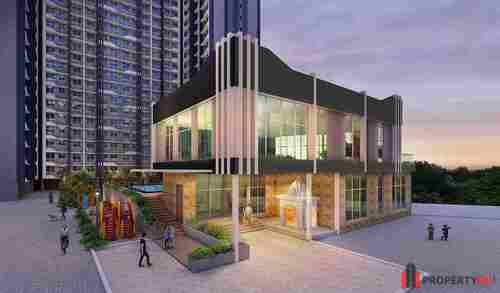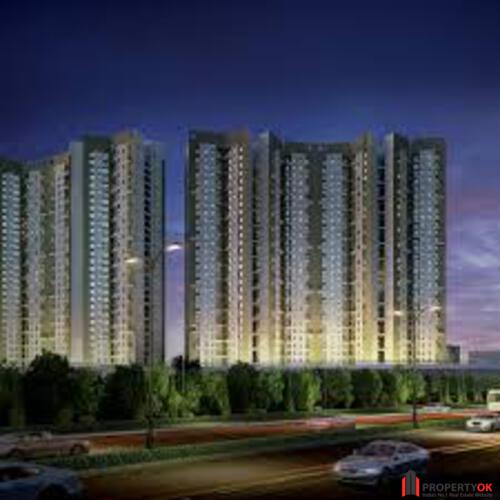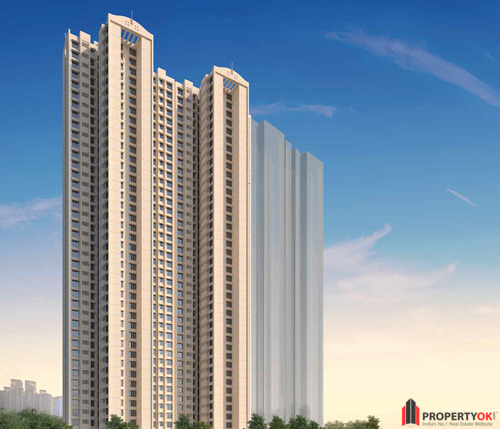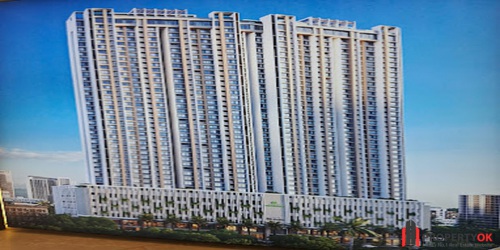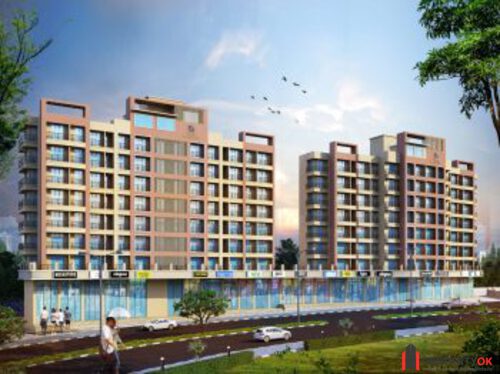Experience the promise of progress with Purva Panorama, where Puravankara’s renowned vision and perseverance have brought a landmark project to life in Thane’s thriving real estate landscape. Despite a journey through complex legal and regulatory challenges—including ownership transfers and compliance milestones—the project stands as a testament to determined resolution and an unwavering commitment to transparency and quality of life. Discover how careful navigation of past hurdles has shaped Purva Panorama into a symbol of trust and new beginnings for discerning homeowners and investors.

The Real Story of Puravankara Group Thane’s Newest Venture
While the Ghodbunder Road Thane location promises premium living, prospective buyers deserve to know the whole story behind the property’s complex development journey. This investigation reveals the intricate legal manoeuvres that transformed a foreclosed property into one of Thane’s most anticipated residential projects.

The SARFAESI Recovery: A Property Born from Default
The Distressed Asset Origins
Few buyers realise that Purva Panorama sits on land that changed hands through foreclosure proceedings. The property was acquired by Purva Oak Private Limited following a loan default scenario:
- Previous Owner’s Financial Collapse: Man Realty Limited (MRL) defaulted on loans secured by this prime Thane property
- SARFAESI Act Invocation: Lender VSJ Investments Pvt. Ltd. took possession under financial recovery laws in 2023
- Transfer Through Sale Certificate: Rather than through traditional property transactions, the land was acquired via Sale Certificates dated June 7, 2024
This foreclosure-based acquisition represents a critical chapter in the property’s history that most marketing materials conveniently omit. Under the SARFAESI Act, lenders can recover secured assets without court intervention, but such recoveries often face subsequent legal challenges that can cloud title clarity for years to come.
The Implications of SARFAESI Acquisition
SARFAESI acquisitions carry inherent legal vulnerabilities that ordinary property purchases do not. These include:
- Right of Redemption: The original borrower (MRL) retains certain redemption rights under specific circumstances
- Procedural Challenge Vulnerability: SARFAESI procedures must be followed meticulously, with any deviation potentially invalidating the transfer
- Third-Party Interest Protection: Certain third-party interests may survive the SARFAESI transfer if not properly addressed
While Purva Panorama has proactively sought to mitigate these risks through supplemental legal documentation and due diligence, the underlying SARFAESI-driven nature of the acquisition remains a critical and distinguishing aspect of the property’s legal profile, especially for prospective buyers considering Purva Panorama on Ghodbunder Road, Thane.
Corporate Insolvency Proceedings: The NCLT Shadow
Bankruptcy Court Involvement
The property was entangled in serious corporate insolvency proceedings:
- The Corporate Insolvency Resolution Process (CIRP) was initiated against the previous owner, MRL in 2023
- Only a settlement achieved on May 31, 2024, through the National Company Law Appellate Tribunal (NCLAT) cleared the path for development.
- This settlement comes with conditions that could potentially affect future development rights.
The Lingering Effects of Insolvency Proceedings
When a property emerges from insolvency proceedings, it rarely does so with a spotless slate. The NCLAT settlement that enabled Puravankara Projects in Thane to proceed with development likely includes:
- Creditor Claim Settlements: Arrangements to satisfy or compromise various creditor claims
- Operational Restrictions: Potential limitations on how the property can be developed or monetised
- Contingent Liabilities: Possible future payment obligations based on development milestones or financial performance
- Regulatory Oversight: Enhanced scrutiny from financial and real estate regulatory authorities
These factors create a complex legal environment that sophisticated buyers should understand before making a purchase commitment.
The Unorthodox Project Management Structure

Former Owner’s Continued Involvement
In an unusual arrangement that raises questions about the clean break typically expected in property transitions, the Project Management Agreement dated July 12, 2024, keeps the defaulting developer MRL involved as project manager. This creates a peculiar dynamic where:
- Decision-Making Authority: The exact scope of MRL’s continued decision-making power remains unclear
- Potential Conflicts of Interest: MRL’s financial interests may not perfectly align with those of new buyers
- Expertise Retention vs. Risk: While MRL’s familiarity with the project offers continuity benefits, their previous financial difficulties raise concerns
- Liability Allocation: The agreement’s structure determines who bears responsibility for construction defects or delays
This continued relationship between Purva Oak and MRL represents a significant departure from standard development practices, where the acquiring entity typically assumes complete control.
MahaRERA Registration: What The Documents Reveal

Registration Details and Hidden Implications
Purva Oak Private Limited secured MahaRERA registration for its “One Park Avenue – Avenue 1 & 6 projects in August 2024. While this provides fundamental regulatory legitimacy, careful examination of the registration reveals several noteworthy elements:
- Project Timeline Constraints: The development faces strict completion deadlines that could be challenging given the property’s complex history
- Financial Encumbrances: The property carries a significant mortgage to Catalyst Trusteeship Ltd. (October 16, 2024)
- Previous Owner’s Continued Involvement: The original defaulting developer MRL remains involved as a “project manager” through an agreement dated July 12, 2024
Detailed Analysis of MahaRERA Disclosures
The MahaRERA registration documents, when scrutinised closely, reveal additional considerations that prospective buyers should evaluate:
- Phased Development Strategy: The Project appears structured for phased development, potentially creating situations where early buyers live alongside ongoing construction for extended periods
- Financial Structure Complexity: The debenture-based financing secured by the mortgage to Catalyst Trusteeship suggests sophisticated financial engineering that may impact project economics
- Approved Plan Modifications: The plans submitted to MahaRERA include modifications from earlier versions, raising questions about what changed and why
- Common Area Allocations: The precise allocation of common areas and facilities across development phases deserves careful review.
Check out the blog to uncover the legal issues linked to Lodha Amara.
Lodha Amara Thane: A Luxurious Dream or a Legal Concern?
Land Surrenders and Civic Obligations: The Diminishing Footprint
Development Restrictions
While marketing materials emphasise the expansive 51,660 square meter property, buyers should note:
- A substantial 16,233.85 square meters (nearly one-third of the land) has been surrendered to the Thane Municipal Corporation
- This surrender significantly reduces the development’s actual footprint
- The mutation of this surrendered portion in revenue records remains pending, creating potential complications
The Impact of Surrendered Land
The substantial land surrender to TMC creates several critical implications:
- Density Implications: The reduced developable area may result in higher density construction than marketing visuals suggest
- Amenity Space Constraints: Less land means potentially reduced space for amenities like gardens, play areas, and recreational facilities
- Privacy and View Considerations: The public infrastructure developed on surrendered land may impact privacy and views for certain units
- Future Maintenance Boundaries: The interface between private development and public infrastructure creates ongoing maintenance and security considerations
This surrendered land represents a significant modification to the original property configuration that careful buyers will factor into their evaluation.
Contested Ownership Claims: The Lingering Threats

Unresolved Challenges
The property’s ownership history includes formal challenges that, while not currently active litigation, represent potential legal vulnerabilities:
- Oriental Industries issued a formal challenge (letter dated April 11, 2024)
- Lal Roe Measuring Tools filed similar objections (November 28, 2023)
- While public notices published in the Times of India, Thane Vaibhav, and Nawshakti on November 21, 2024, elicited no formal claims, the statutory period for such challenges extends well beyond this date.
The Legal Significance of Formal Objections
When prior parties in a property’s ownership chain file formal objections, even without immediate litigation, they create legal risk factors that can materialise later:
- Limitation Period Considerations: Legal challenges to property transfers typically benefit from multi-year limitation periods
- Trigger Event Vulnerability: Future development milestones or project success could trigger dormant claims seeking profit participation
- Title Insurance Implications: Such objections may affect title insurance availability or terms
- Disclosure Obligations: These objections create potential disclosure obligations in future transactions
Property Foundation: The Fragmented Land Assembly
A Complex Patchwork of Parcels
Purva Panorama is not a single unified property but rather a complex assembly of three distinct land parcels:
- Land Parcel 1: Survey No. 99/2/1 (formerly portions of Survey Nos. 99, 100, 113, and 114), measuring 19,590 square meters
- Land Parcel 2: Comprising Survey No. 114/4 (part) at 15,185 square meters and Survey No. 115/2 at 7,970 square meters, totalling 23,155 square meters
- Land Parcel 3: Remaining portion of Survey No. 114/4, measuring 8,915 square meters
The Development Implications of Fragmented Land
This land parcel fragmentation creates several practical considerations for development:
- Integration Challenges: Creating a cohesive development across historically separate parcels presents design and infrastructure challenges
- Access and Easement Requirements: Ensuring proper legal access between parcels requires careful easement planning
- Differential Development Potential: Historical land uses and classifications may result in varying development permissions across parcels
- Zoning and Setback Complexity: Meeting regulatory requirements across fragmented parcels often requires creative site planning
High Court Challenge: The Dismissed but Revealing Petition
A petition filed by Ramabhau Tayde against the State of Maharashtra in 2021 was dismissed for lack of standing, not necessarily for lack of merit. This challenge raised questions about land conversion and usage permissions that, while not currently active, highlight regulatory sensitivities surrounding the property.
The Substance Behind the Dismissed Challenge
While dismissed on procedural grounds, the Tayde petition raised substantive issues that reveal important aspects of the property’s regulatory history:
- Land Conversion Questions: The petition apparently questioned the process through which agricultural land was converted for residential development
- Environmental Clearance Concerns: Environmental impact assessments and clearances were allegedly scrutinised
- Public Interest Arguments: Though lacking personal standing, the petitioner raised public interest arguments about development density and infrastructure impact
- Procedural Irregularity Claims: Administrative procedures in granting development permissions were questioned
Such challenges, even when dismissed, often contain substantive information about a property’s development history that sophisticated buyers should understand.
Critical Documentation: The Devil in the Details
Legal Document Complexities
Purva Panorama legal foundation reveals a complex web of instruments:
- Multiple Conveyance Deeds: Different execution dates for various parcels (April 3, 2024, and June 7, 2024, for Land Parcel 1; July 31, 2015, with 2023 rectifications for Land Parcels 2 & 3)
- Powers of Attorney: Executed by the previously defaulting owner MRL in favour of Purva Oak in June 2024
- Project Management Agreement: The unusual arrangement keeps the previous owner involved in development
Document Discrepancies and Timing Questions
The chronology and nature of these legal instruments raise several noteworthy considerations:
- Deed Rectification Necessity: The need for 2023 rectifications to 2015 conveyances suggests original documentation deficiencies
- Power of Attorney Timing: Powers of attorney executed in June 2024 by MRL came after their loan default and loss of possession
- Registration Timeline: The clustering of registrations in mid-2024, despite transactions spanning multiple years, raises timing questions
- Document Hierarchy Conflicts: Potential conflicts between different instruments must be resolved through careful legal interpretation
Purva Panorama: Revenue Record Updates
While 7/12 extracts and mutation entries (Nos. 3598, 3599) show progress in reflecting Purva Oak’s ownership, the process remains incomplete regarding the TMC-surrendered land. This creates a situation where:
- Record Discrepancies: Different government records may show inconsistent ownership information
- Property Tax Implications: Responsibility for property taxes may be unclear during transition periods
- Service Connection Authority: The authority to obtain utility connections may be impacted by incomplete record updates
- Development Permission Requirements: Certain development permissions require complete and current revenue records
The Inside Story: What MahaRERA Compliance Actually Guarantees
While MahaRERA registration provides certain buyer protections, it’s important to understand its limitations:
Financial Protection Mechanisms
The mandated escrow account for 70% of buyer payments provides critical protection but doesn’t eliminate all financial risks, particularly those related to the existing mortgage and financing arrangements.
Timeline Accountability with Caveats
The project completion date registered with MahaRERA is legally binding but contains provisions for “force majeure” extensions that could be invoked due to the property’s complex legal history.
Specification Adherence Limitations
While advertised amenities must legally be delivered, the exact quality and implementation details remain subject to interpretation within certain parameters.
Enforcement Reality
The practical effectiveness of Maharera protections depends on:
- Authority Resources: The regulatory authority’s capacity to monitor thousands of registered projects
- Complaint Mechanism Efficiency: The speed and effectiveness of the complaint resolution process
- Developer Compliance Incentives: The balance of penalties versus benefits of non-compliance
- Buyer Organization: Often, effective enforcement requires coordinated action by multiple buyers
The Professional Assessment: “Clear and Marketable” But With Qualifications
Legal experts have assessed the title as “clear and marketable” but with two significant qualifications:
- The substantial mortgage to Catalyst Trusteeship
- Pending mutation of TMC-surrendered land in revenue records
These qualifications, while not fatal flaws, represent ongoing legal considerations that prudent buyers should factor into their decision-making.
What Puravankara Thane Buyers Need to Consider Before Signing
Conclusion:
The legal history of Purva Panorama reveals a property that has overcome significant challenges to reach its current development status. While Puravankara Projects in Thane has secured necessary approvals and clearances, the property’s complex journey from foreclosure to premium development deserves careful consideration by potential buyers.
For those considering this Purva panorama development, this investigation provides crucial context beyond marketing materials. Armed with this knowledge, prospective buyers can make truly informed decisions about what remains, despite its complicated history—a potentially significant investment opportunity in Thane’s evolving real estate landscape.
The transition from distressed asset to premium development represents both risk and opportunity. Puravankara Group Thane’s experience in navigating complex developments provides some reassurance, but the unique legal history of this specific property creates considerations that extend beyond typical new development purchases. Buyers who understand these factors and negotiate appropriate protections position themselves to benefit from the potential upside while managing the distinctive risk profile this history creates.
FAQs
1. What is the core legal issue surrounding Purva Panorama in Thane?
The core legal issue involves the property’s acquisition through a SARFAESI Act foreclosure after its previous owner, Man Realty Limited (MRL), defaulted on loans. This foreclosure-based transfer introduces specific legal vulnerabilities and risks that buyers should carefully examine.
What is SARFAESI, and how does it affect Purva Panorama?
SARFAESI allows financial institutions to seize and auction secured assets without court intervention when borrowers default. In Purva Panorama’s case, this process means the land was acquired via a Sale Certificate, raising risks like redemption rights, procedural scrutiny, and potential third-party claims.
3. Are there any contested ownership claims affecting Purva Panorama?
Yes. While not currently active in court, formal challenges were issued by Oriental Industries and Lal Roe Measuring Tools in 2023 and 2024. These objections, though dormant, could resurface during future milestones or financial success.
Disclaimer: The content shared in this blog is intended for general informational purposes and is derived from industry insights, expert opinions, and publicly available sources deemed reliable. While every effort has been made to ensure accuracy and relevance, we do not make any guarantees regarding the completeness or correctness of the information. This blog does not constitute legal, financial, or professional advice. Readers are encouraged to research and consult with qualified professionals before making real estate decisions. We are not liable for any consequences arising from using this content.

 Thank You
Thank You

